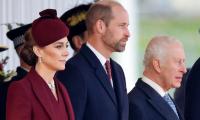Recently, an informative article appeared on the Urdu version of the UK's most renowned journal, 'The Independent', highlighting some historical facts about the Ramkot Fort. According to the writer Sajjad Azhar, the fort, located in Azad Jammu Kashmir near Mangla Dam, is attributed to Hindu religious hero Ram Chandra. The ancient site is comparatively in a better condition than other forts in the Potohar region.
Ram, according to ancient epic Ramayana, is a prominent deity in Hinduism. He is equally respectable for followers of Buddhism, Jainism and other local religions. Due to this, the fort can be transformed into a best tourist spot based on interfaith harmony. This majestic fort, situated on a high hilltop, is also famous for its unique architecture and beautiful location. Due to the confluence of the rivers Jhelum and Poonch, the fort is surrounded by waters on three sides, and is accessible by boat.
The author, in his report, also described many evidences of Hindu civilization there. At the left side of the central entrance, there is a temple which is currently not in good condition. The walls of the temple have collapsed. It is believed that the fort was built over the site of an old Hindu Shiva temple. A large number of the local Hindu population once used to perform religious rituals there.
Historically, the Potohar region was a hub of wars and conflicts among different forces after the 13th century. This region was also ruled by the warrior tribe Gakhar for many hundred years. Due to their extraordinary abilities to construct and renovate forts, they also made several changes to Ramkot Fort from a defence perspective. According to some historians, the fort was built by the Gakhar leader named Toglu whereas it was renovated during the tenure of Gakhar queen Mangu.
During the Dogra rule over Kashmir, Ramkot Fort was also used for military purposes. Just 20 kilometers away, there is another historical fort located, which is attributed to Princess Mangla, the daughter of famous Hindu king Porus. Historians are of the view that around 2000 years ago, the battle between the Greek warrior Alexander the Great and Raja Porus was held here near this historic site, currently present on Pakistani territory.
Ayodhya is commonly known as the birthplace of Sri Ram but still it is very difficult for historians to reach a final decision. In this regard many places in India, Pakistan, Afghanistan, Nepal and Middle East are believed to be the birthplace of Sri Ram. Among many possible places, one site is Ramkot Fort. In this regard, the Independent Urdu also highlighted that British historian David J F Newall mentioned in his book 'The Highlands of India' on page 181 that Sri Ram Chandra was born in the Ramkot Fort territory.
In my view, it is the duty of government to look after the sacred and historical sites of all religions. Luckily, our current political and military leadership, judiciary and local administration, all are on one page for the protection of the sacred sites of non-Muslim minorities. The opening of the Kartarpur Corridor is undeniable proof of the promotion of religious harmony. Similarly, the Supreme Court of Pakistan has won the hearts of the non-Muslim communities by issuing orders for the restoration of Shri Param Hans Ji Maharaj’s Samadhi and celebration of Holi at the ancient Pradlad Temple in Multan.
Being patron-in-chief of the Pakistan Hindu Council, I would like to request the government that the Hindu community all over the globe has a religious and emotional attachment to Ramkot Fort attributed to Ram Chandra. It is our dire wish that the Shiva Temple be restored there. I believe that the opening of such glorious sites will result in a huge revenue to strengthen our national economy as well as work towards promoting Pakistan’s soft image internationally. In this regard, the Pakistan Hindu Council is committed to play its proactive role in transforming these heritage sites into the country's leading tourist destinations.
The writer is a member of the National Assembly and patron-in-chief of the Pakistan Hindu Council.
Twitter: @RVankwani
Internationally, there have been misleading theories propounded about so-called slowing of Chinese economy
Karachi has long been Pakistan’s financial capital and a major hub for industry and trade
In the past, with every rising of the sun, much anticipation was associated with reading the newspaper
It is clear that more is at stake as US abandons its role as global leader of system based on multilateralism
I believe that those who adopt attitude of forgiveness, mercy and tolerance are role models for all of humanity
First major point of contention between Brussels and Washington is the unequal distribution of defence expenditure







